MikroTik CRS320-8P-8B-4S+RM Power Consumption
On the power consumption side, there is a lot to talk about. First, we put the PoE+ and PoE++ ports on our Fluke 5018508 (Amazon Affiliate Link) and the ports showed up according to spec. The more interesting part was the Gospower 600W PSU situation. Standard, we get one power supply.
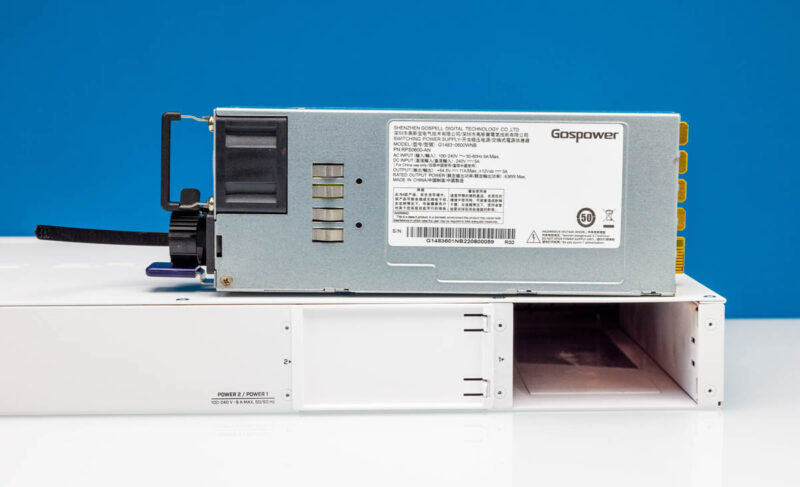
As we mentioned, you can get a second one with the Optional G1483-0600WNB kit.
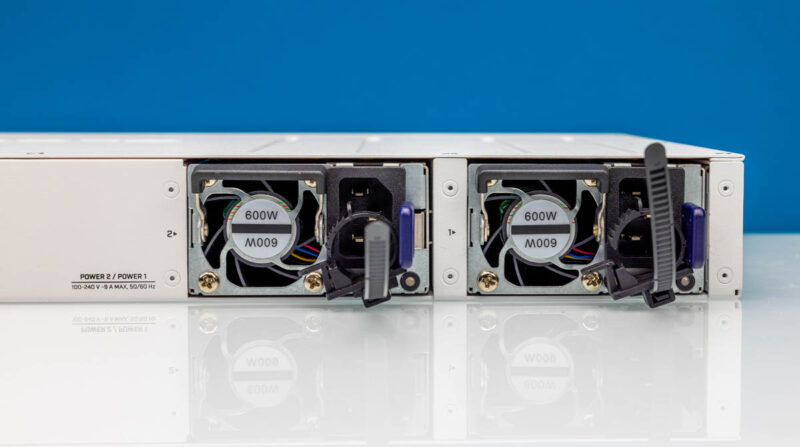
The switch itself idled in the 24-27W range for us and MikroTik says that it gets up to 36W with attachments. With SFP+ modules and putting load on the switch we were able to get it above 40W so we might use 50W as a safe amount for the switch itself, leaving up to around 550W for PoE devices (minus PoE loss.)
MikroTik says that with two 600W PSUs it can get 1150W of power consumption and with 963W of PoE output. There is, however, a catch. If one PSU fails and it is running above 550-570W of PoE output, then there is not enough power to drive all of the devices attached. We would have preferred if MikroTik had an option with higher capacity PSUs so that either could handle the entire load. With two power supplies, the failure points in the system are doubled. Having a single higher power PSU even in a higher cost SKU, or a redundant higher power PSU option seems worthwhile here.
Key Lessons Learned
PoE++ is really neat. With 90W of power delivery on 802.3bt Type 4 PoE++ you can do more than just power lower power APs, switches, and other devices.
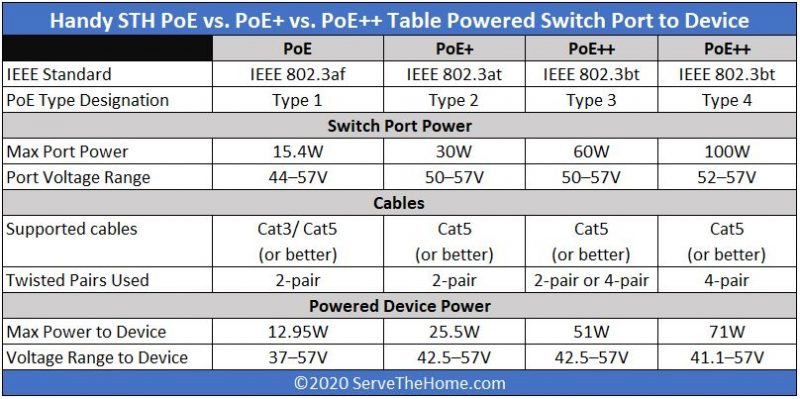
In the video, we showed how you can even power 100GbE switches like the MikroTik CRS504-4XQ-IN using the output from this switch.
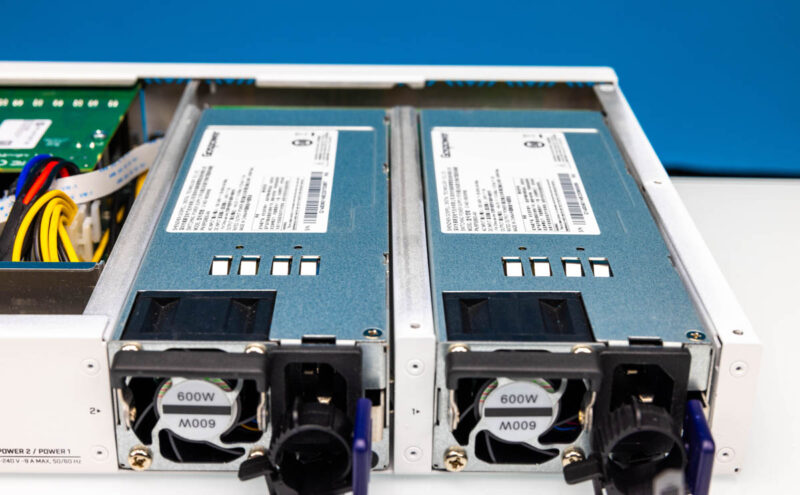
The strange part comes down to applications. This is not really a great choice for WiFi 7 APs. We would want something between 2.5GbE, 5GbE, or 10GbE and PoE++ (Type 3) for those. Even for today’s mini PCs whether they are desktops, running signage, or in kiosks, having 2.5GbE PoE++ would be useful. On the other hand, PoE++ is used in many applications that do not even need 1GbE speeds, such as cameras. With Type 4 PoE++, even lighting can be powered over the network, and that is a low-speed application.
One of the big challenges is that we want 2.5GbE or 10GbE PoE++, but a lot of the PoE++ market is fine with 100M. Perhaps the answer is that this is simply not the switch for those higher-speed applications.
Final Words
Realistically, this switch has a ton going for it. It has a lot of PoE delivery, covers to 90W PoE++ devices, and even has four SFP+ ports that we have not talked much about but that can help to provide some electrical isolation and uplink bandwidth.
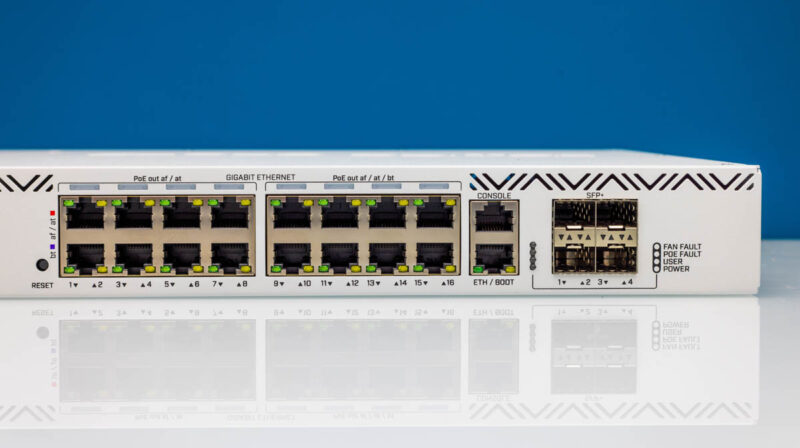
Perhaps the most important aspect to this switch is the price. At $400-500, for the base model and under $600 when upgraded with the second 600W PSU, the MikroTik CRS320-8P-8B-4S+RM is perhaps the best value 1GbE PoE++ switch on the market right now if you also want the management and a brand that folks have heard of. That makes this a very appealing switch.




Still not 2,5Gbe or 5Gbe ethernet port, for new deployement with access point in 2,5Gbe it’s not usefull
How much, if any, control do you have over what ports get priority in the case of loss of one of two power supplies?
Obviously full redundancy is nicer, if you can justify the price; but for a lot of intermediate applications it seems like a relatively low risk of having to shed some of the load could be acceptable; but only if you can control what load gets shed.
If losing a PSU means that everything browns out and then renegotiates a more or less random(or at least unpredictable and uncontrollable) subset of the original devices depending on which ones reboot how quickly and how the chips fall then that makes losing one PSU potentially nearly as bad as just losing the switch(especially if you are taking advantage of Microtik’s taste for POE-powerable switches in the vicinity); but if you can set up a POE config for the lower budget and one for the higher budget and have losing one PSU just move you neatly from one to the other that would be something you could work with; especially given the fairly low failure rate of decent PSUs.
Why someone would make a POE++ switch to support Wifi6 and beyond, with only 1GbE ports is beyond me. I’d get one in a heartbeat if it had 2.5GbE ports (even when I do no like their OS).